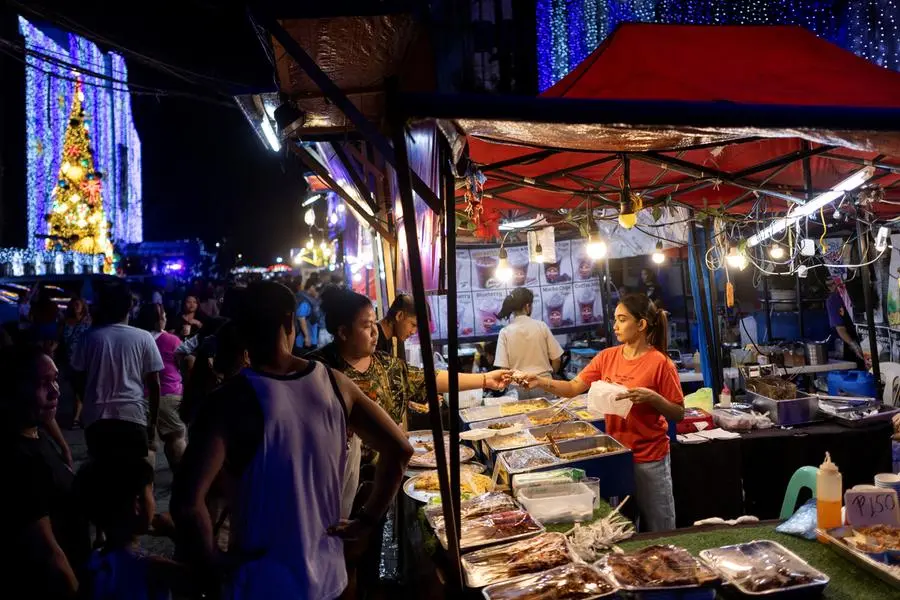PHOTO
Decades of incompetence and corruption at the Department of Agriculture have made food inflation rather sticky for us these days. Not even a competent Secretary of Agriculture who is determined to reverse the DA's incompetence and corruption can do much within the short period of time since he took over. In a sense, BBM made the problem worse by taking on the agriculture portfolio on paper but actually left the management of DA to old hands who contributed to the decades-long problems.
At least BBM realized his mistake and made corrections. He can be rest assured now that DA is in good hands. A crisis would have happened by now otherwise because we have the El Niño drought that is compounding our usual problems in growing and distributing our food supplies. We just need to see more decisive actions like how the new DA secretary cleaned up NFA, the root of our problems with rice availability and price.
Our headline inflation, because of sticky food inflation, quickened for the second straight month to 3.7 percent YoY in March (Feb 2024: 3.4 percent YoY, March 2023: 7.6 percent YoY) slightly below the 3.8 percent YoY consensus estimate and at the mid-point of the Bangko Sentral ng Pilipinas (BSP) range estimate of 3.4 percent and 4.2 percent.
According to the Monetary Board: 'The risks to the inflation outlook continue to lean toward the upside. Possible further price pressures are linked mainly to higher transport charges, elevated food prices, higher electricity rates and global oil prices. Potential minimum wage adjustments could also give rise to second-round effects.'
How bad is our food inflation problem now?
In a sense, our sticky food inflation problem is all about rice. Food inflation accounts for some 57 percent of the total inflation this March. It doesn't help that the price of rice in the global market has also been high.
The really bad news is that for the bottom 30 percent of our population, rice contributed 84.3 percent to the food inflation rate they are feeling. According to the PSA, inflation for the poorest 30 percent is at 4.6 percent, higher than the 3.7 percent national rate. This means there will be more hunger and malnutrition among our poor. And there will be increased clamor for wage increases to cover the high cost of rice, the basic staple food. That means the cost of our products and services will become even more uncompetitive compared to our peer countries in the ASEAN region.
Congressman Joey Salceda observed that prices of other food items have gone down. Corn prices are declining. Fish prices are down. Vegetables are cheaper this year than last year. And even sugar prices are slightly down. Bread prices are mildly up, but that is attributable partly due to the correlated prices of wheat and rice, especially in India where they are substitutes.
This is why Cong. Joey is saying the administration's gameplan must be focused on rice. But it isn't as if this isn't the focus of DA Secretary Francisco Tiu Laurel and Cong. Joey recognized that.
'Secretary Tiu Laurel has been more aggressive with distributing rice production support this quarter. He has brought machinery distribution, for example, to about 92 percent of target. The P12 billion rice farmer financial assistance is also set to be completed this June - again, just in time for planting.
'The DA has also been more active with delivering programs from the Survival and Recovery Loan program of the Agricultural Credit Policy Council. The Philippine Crop Insurance Corp. has also begun to issue indemnity insurance payments to farmers affected by drought.
'There is significant progress being made in the DA, and his governance cleanup of the NFA will also help make cheap rice available to the poor, as well as provide a better market for rice farmers.'
So, Cong. Joey sees rice, because it requires the most irrigation among our food crops, will provide the greatest upside risk to inflation moving forward because of El Niño.
'PAGASA's forecasts indicate that this April, rainfall shouldn't actually be catastrophically below normal. We will still see some rain - so we should impound that. The worst droughts will be in May, with the hardest-hit regions being Central Luzon and Bicol. But models suggest that El Niño will taper off in June.'
Cong. Joey is right. Over the long term, we must address the fragility of the country's food systems, neglected by past administrations or handled incompetently.
'President Marcos has been clocking in very strong rice harvest figures - and recorded the biggest harvest in history in 2023. The path forward with rice is to address pre-harvest costs and post-harvest losses, while making the system more resilient from trade shocks and adverse climate conditions.'
And Sec. Tiu Laurel must deal with local food trading cartels once and for all. These are the people who benefit in times of scarcity, which they sometimes cause. The program to put more cold storage facilities in strategic locations will be a big boost for farmers' incomes provided such facilities are not taken over by the local food trading cartel as they always do in connivance with officials of NFA and other government agencies.
The important thing is that there is no rice scarcity in the market. The price is unaffordable for the poor, who must now be helped by DSWD. Scarcity in supply will just make things intolerable. We are not there now.
Copyright © 2022 PhilSTAR Daily, Inc Provided by SyndiGate Media Inc. (Syndigate.info).





















